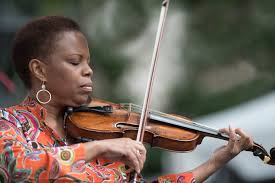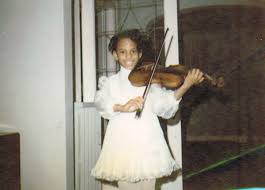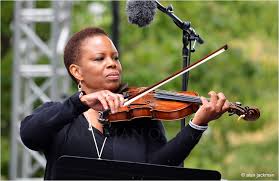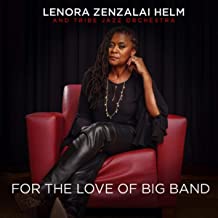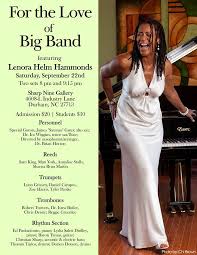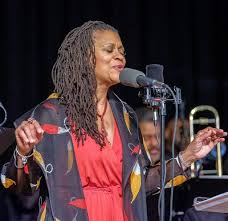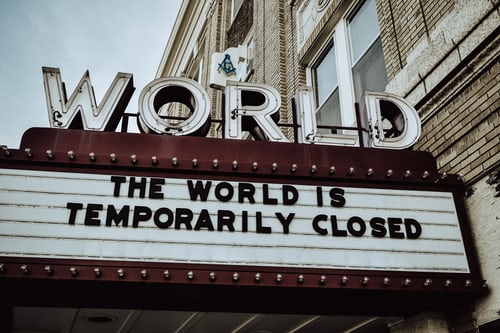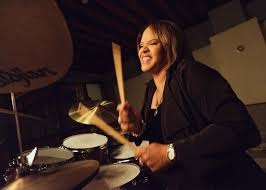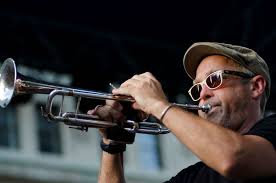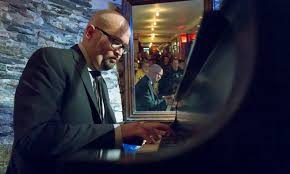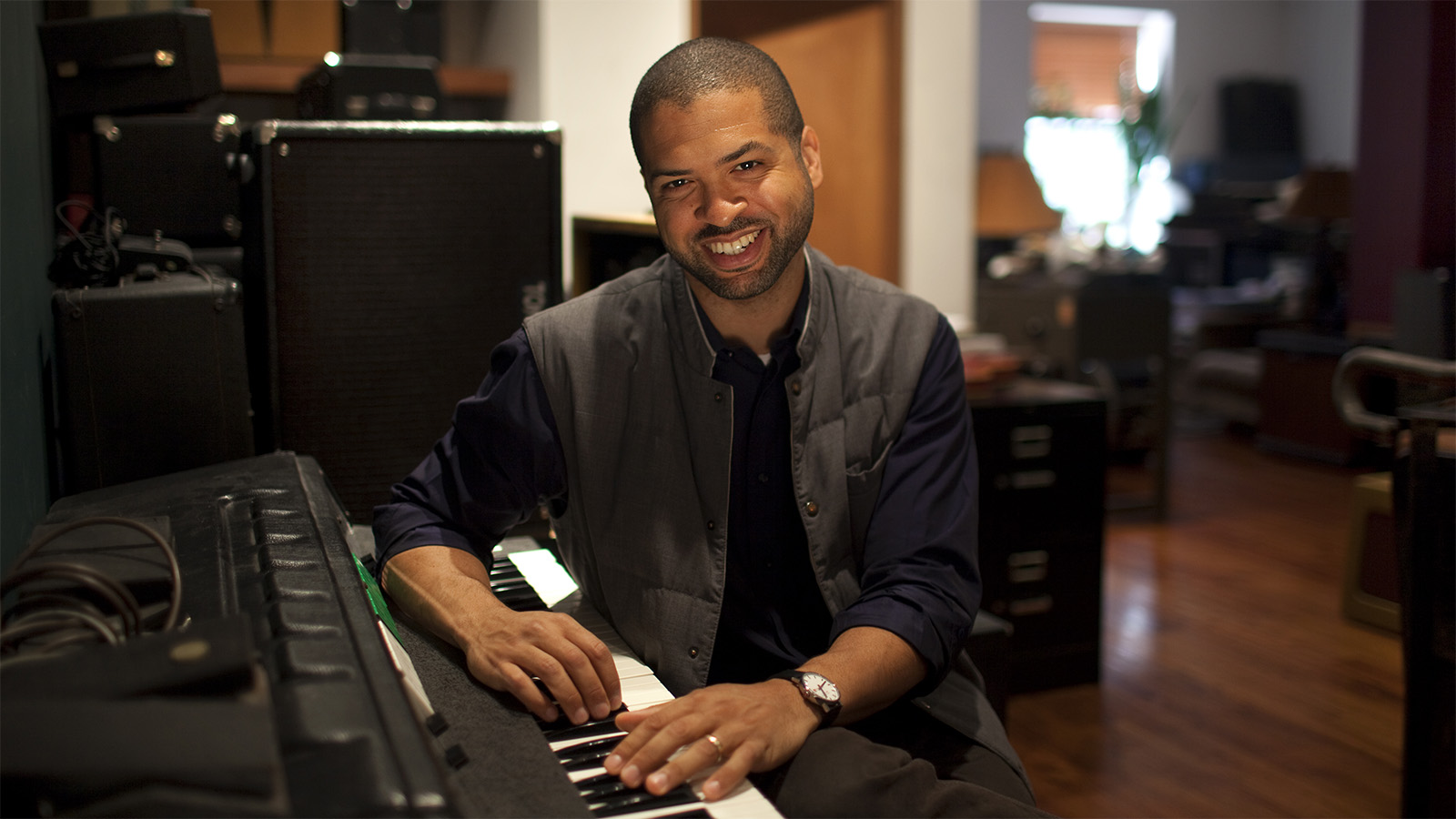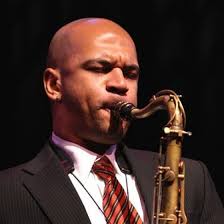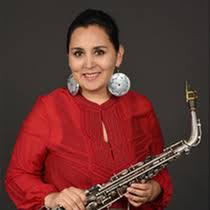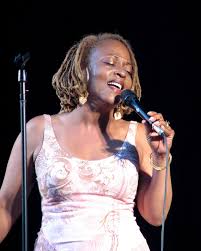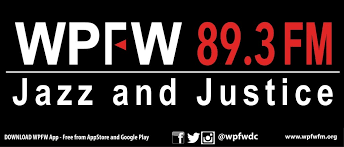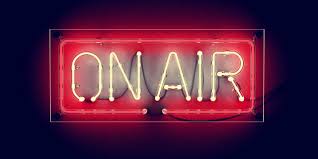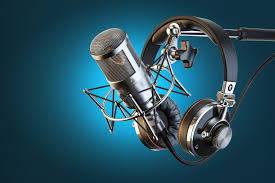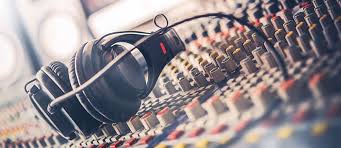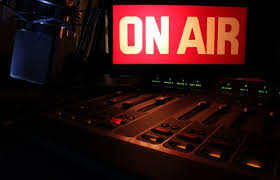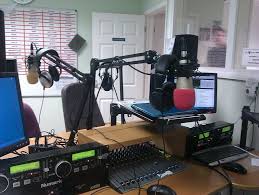This dialogue is part two of a series of communications with touring performing artists discussing their sense of what their performing life will look like once the fog and uncertainty of our current pandemic life lifts enough to allow them to play to live audiences. We’ve posed three questions to each of these artists, questions about their post-pandemic performing life, their sense of what that will mean for the venues they typically perform in across the globe, and their expectations of those venues and themselves when it is safe to resume some modicum of their performing career.
Our participants in Part Two of this series of dialogues include the following bandleaders: Melissa Aldana (saxophone); Monty Alexander (piano); Jamie Baum (flute); Owen Broder (saxophone); Clairdee (voice); Akua Dixon (cello); Gerry Gibbs (drums); Monika Herzig (piano-keyboards); TK Blue (saxophones-flute); Ben Williams (bass); Charles Rahmat Woods (saxophones-flute); Helen Sung (piano).
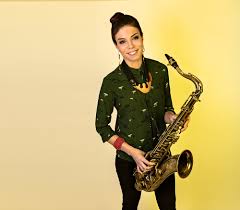
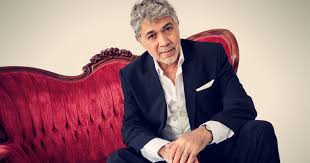
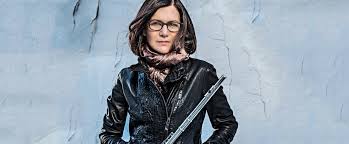

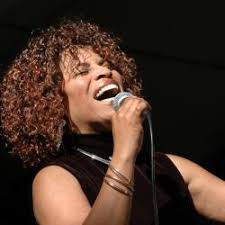
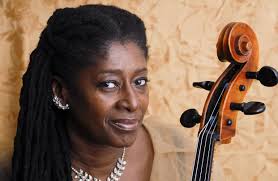
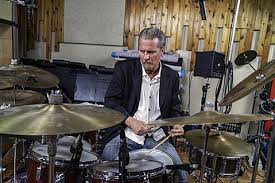
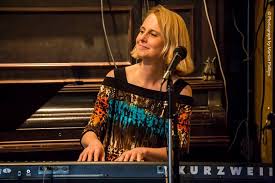
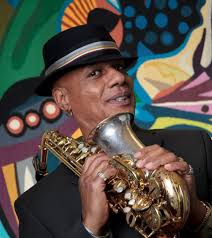
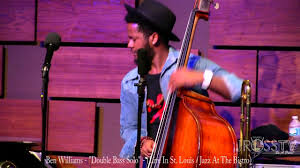
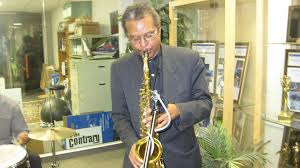
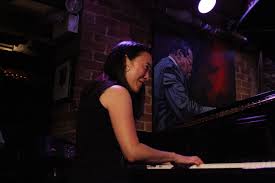
1. What precautions will you take going forward – at least until we have a clear sense that Covid-19 has been successfully eradicated?
“To be honest, I feel comfortable performing before an audience right now! But that’s a knee-jerk reaction…taking my emotion out of it – for me, a major step towards feeling safer (and more responsible) to resume in-person performances again is having universal testing (and regular testing) be available…maybe even mandatory. A comprehensive system to keep track of everyone’s results would follow, although how we would do this will probably be hotly debated. Societal trust has to be re-built, so that I don’t see others as threats who could infect me. Although some enforcement will likely be needed initially, I hope that each of us will do our part to promote public health/safety, and over time come to trust that others have done their part as well. Some other thoughts: for jazz clubs to adopt the reduced capacity rules that restaurants have likely to adhere to (at least for now) seems a shame, and counter to what live music is all about – rubbing elbows, community, being close together, feeding off of each other’s expressions, exclamations, energy. Will musicians have to wear masks onstage? I wonder how it will impact the live performance experience for artists and audience alike. Performing to an empty club while being live streamed has been offered as another solution, but for me it is an artificial and sadly lacking alternative. But we have to make the best of the situation and I’m game to trying all the possibilities. But I still sincerely hope one day we can return to how live music was “in the past.” I think the international community is further along in the process of re-opening, and we should definitely learn from them.”
“I think there will be a huge change in the way we interact with audience[s], capacity of venues, the way we travel, the way we perceive the world. But if I am just talking about the music I personally feel this is gonna be such huge change for me since there has been so much time to think; the growth, to be on my own, etc…. and all of this has allowed me to get to know myself in a way that I would have never done it before and that is connected to the way I play and express myself.”
“If I try to imagine the more favorable scenario, it would be one where the audiences would be much less [smaller in terms of] attendees, of course seated several feet apart with everyone wearing health masks, including artists – horn players and singers. In my case as a piano player, the piano would need to have been wiped down with anti-bacterial sanitizer before the performance and I myself would be obliged to do so again to make sure there is no virus on the keys. Another thought – perhaps the safer kind of venues are open-air with people sitting several feet apart.”
“I tend to think outdoor performances will be a more realistic way to begin any live performances. From everything they are saying, the worst thing is to be in a small or medium sized venue for any length of time. If I were a bass, piano, guitar player, or drummer, I think I would fare better because they can play while wearing a mask, and I wish I could!. Obviously, when there is either a vaccine and/or therapeutics that work, that would help ease the concern as well.”
“Traveling is an issue. But once we’re in the performance space, I don’t imagine the primary issue will be proximity to bandmates on the stage. Hopefully by the time bands are performing together, the general public will have access to affordable and reliable tests, which would enable bands to safely rehearse and its members to interact with one another. But audiences will likely be limited in capacity, as it will likely still be a high risk for the foreseeable future to be in-doors with large groups of people. In the past, it was fairly common for artists to interact with at least a portion of the audience for awhile following a performance. I think this would have to be extremely controlled, if not avoided altogether.”
“It’s going to be a huge challenge for artists and presenters going forward. It is highly probable that artists and venues will continue to present more live-stream shows perhaps in conjunction with live performances. If the trend of live stream continues, I wonder how the criteria presenters currently use to select artists may change. I am concerned that many seasoned, less[er] known artists like myself will be left out with preferences going to legacy and “known” artists.
“Venues must make money to stay in business – especially since there will be fewer audience members due to social distancing restrictions. I LOVE performing in front of an audience. There’s nothing better than communing together with music. I realize that in order to adhere to sanitization rules and social distancing guidelines, presenters will have to rethink how many shows to present, how many people in the band, etc. I would be up for doing a 90-minute show in the afternoon, with a few hours in between to allow for cleaning, etc., and perform a second 90-minute show in the evening.”
“The public is getting used to being able to see concerts online at home. These are mostly live solo or duo performances. After the pandemic has calmed down, I can see concerts where bands are performing at a venue with either no one there or a limited amount of people in the audience. Tickets would be sold to view the bands’ performance online all over the world. Outdoor festivals/performances might be safer to do live. I would like for a vaccine to be in place before I start doing public performances.”
“I think I have only heard 1 or 2 musicians say they would take a chance and play in front of a crowd no matter how big the crowd was. I don’t see anytime soon for the majority of music performing clubs [or] concert venues opening up and having bands play in front of people sitting, drinking without the new norm called “Social Distancing.” If a club can only fit 100 and now through social distancing can safely only have 40 people or less how they will be able to pay bands or make a profit themselves[?].”
“I’m learning tech skills in abundance right now and I hope to implement some of these strategies for collaborations and for connecting with audiences. Of course I look forward to the days of traveling the world again but maybe the music business has tilted to far to relying on live performance income and it’ll be good for a bit less stressful musician’s life, for the environment, and for audiences to have more connection avenues that don’t require excessive travel at all times.”
“It’s very difficult for me to look far ahead as news coverage changes daily and we have to ascertain truth from fiction. One thing is for sure I will always remain positive and optimistic that live performance opportunities will resurrect. By the same token I do believe the landscape for the performing arts will have a new reality. For now I would not feel very comfortable performing in small indoor clubs/venues, unless [they were] large enough and some sort of social distance could be achieved. I think the safe bet going forward is to cultivate outdoor venues, arenas, theaters, etc. With supervision we could maintain social distance in the audience as well as onstage. In addition, with live streaming happening on a large scale, future concerts could be streamed for a small fee. This can create another avenue of revenue for the promoter.”
“It is very hard to imagine what my post-pandemic performances may look like. I just finished reading a New York Times article about promoters and venues basically looking to 2021 at the earliest for reopening large concert venues. I foresee it being a very slow and cautious process. The uncertainty of how to return and what steps need to be put in place are very important. I am very anxious to get back to a “normal” performance atmosphere and honestly I’d rather wait a year (or however long it takes) to get back to a performance environment that everyone feels comfortable with – fans and artists included. I’m not sure if I can feel good about creating something so sacred as music in front of fans that are forced to sit six feet apart. The question becomes: “what is the quality of the experience if we try to return too early?”
“Planet Earth’s economic and social culture has been brought to a screeching halt. That being said, I would not feel totally comfortable [performing] until a vetted vaccine (preventative) or curative treatment is available.”
2. What precautions will you take going forward – at least until we have a clear sense that Covid-19 has been successfully eradicated.
“Basically what the health authorities have been advocating: I wear a mask whenever moving around outside, using hand sanitizer when not at home (or not having access to sinks where I can wash my hands), avoid touching my face, washing hands thoroughly after coming home, and try to take better care of myself (getting more sleep, regular sleep, exercise, healthy eating habits etc).”
“Just try to be as cautious as possible.”
“Even if the virus has been “successfully” eradicated, folks who are like me (including age-wise: 76) they would likely maintain a higher level of vigilance and caution. Therefore a great deal of that earlier carefree attitude that has always been a part of the ‘jazz’ scene would go out the window.”
“I have not left my apartment in 9 weeks except for an occasional walk on our second floor plaza… we are still in lockdown mode in NYC [as of May 21]. It is hard to know when and how to move forward at this point. I will follow the protocol of wearing a mask when I go out, trying to keep 6 feet distance, etc., but in terms of performing live… I can’t say yet.”
“At the moment, I am still generally operating within the parameters of lockdown. As things begin to open up, my priority will be to get tested, which will inform how I move forward. I will be closely following the CDC’s recommendations for safe practices. I plan to continue to avoid physical contact, such as shaking hands, to maintain a safe distance from other individuals, and to carry sterilizing wipes with me for things like music stands, microphones, and other performance equipment that may have been handled by a number of other people.”
“Until we have a clear sense that the Covid-19 virus has been successfully eradicated, the best precautions I can take are to continue to shelter in place, wash my hands, wear as mask, and social distance. When it is “safe” to return to performing, I will continue to do those things. The hardest thing for me will be to resist hugging. Giving a hug is something I’ve always done and is another way that I connect and say “Thank you” to my bandmates and the people who attend my shows. A good thing that has come from the shelter in place mandate is the flexibility of time allowed to create – working on exciting projects to continue to promote my new album and show. Hopefully, these things will entice audiences to come to the live show whenever it is “safe” to perform live again.”
“Limited contact with the audience… mask and social distancing, no direct contact, no hand shaking. Have previously signed CDs, etc. for sale.”
“The next option is live streaming, and guess what – now thousands of people all over the world are going to be live streaming every day and that will be an overload, and the majority of people watching jazz will have to pay and most likely pay for the more well-known artists, and most stuff will get ignored making all those ignored bands earn less money. Now if the more famous person or band is getting more internet attention, how many times can they attract a crowd?”
“Minimal contact with people outside of my direct circles; safe travel precautions with masks, lots of hand sanitizers, playing only with people in my ‘bubble.'”
“The main precaution I take currently is to use a mask and gloves whenever leaving my home. I always respect social distance rules and rarely do I eat food prepared by others (restaurant take/out or delivery). On local TV they featured a famous restaurant that was re-opening and the camera went inside the kitchen where a cook’s mask was below his nose and his helper had no mask on at all!!”
“I believe when we do return to performing there will be much more attention to cleanliness and sanitary precautions. I imagine this will be a much bigger part of our everyday lives (public spaces, equipment, instruments, etc. being regularly sanitized) for our overall peace of mind. I’m definitely not opposed to that especially living in New York City! Again, it’s hard to say at what point we’ll all feel comfortable but in this case I believe it is in everyone’s best interest to err on the side of caution.”
“Until a curative component (vaccine/treatment) is in place, I can only follow “best practices” protocols (hand washing, face masks, social distancing, avoidance of mass transit, etc.) to protect myself, my family, my band, and my audiences. Currently those best practices preclude the sort of audience interactions and environs that have been my normal source of performance engagement. The Catch 22 dilemma is that I am part of the “gig economy”. My living depends on active live social interaction and should a live performance offer come in I will have to give it serious consideration. While internet performances are still developing as an option. I don’t think they have matured into a reliable revenue stream for “gig workers”.
3. What will be your expectations of those who present your performances, in terms of safeguards, audience considerations, and overall attention to making sure artists’ needs are met in that regard?
“I would like those who present my performances to practice all the precautions listed in my answer to Question No.2. Unless we stay quarantined forever, I don’t know if it’s possible to 100% protect everyone from infection when society re-opens. I think the best we can do is implement the recommended safety guidelines, understand what we are dealing with, exercise common sense, and probably practice some some self-denial here and there (like not attending this or that when we might be infected, taking the time to get tested regularly, etc) in the name of the common good.
“I think I am just expecting for the venue to be aware of what is happening, be cautious and respectful of the situation.”
“Presenters would need to be responsible for making sure that everything is/has been done for maximum safety. The artists obviously would need to lower their financial wishes/expectations.”
“All I can say is to follow the science. As I mentioned, right now I am dying to play with people and perform… However, I have to consider the health of the people around me, and as I see how things begin to unfold, I will try to make the best decisions. I’d like to suggest that all of the tech people and everyone wear a mask, and clean everything, etc. But all of that seems like a huge challenge, and of course I can’t wear a mask while playing. Flying or going on public transportation is a whole other thing.”
“I would hope that, as much as possible, presenters minimize the amount of time artists spend in an enclosed space, limit or entirely avoid direct contact with audience members, particularly indoors and in large groups, and keep the stage, equipment, and greenroom or holding area sterile. I think one of the intermediate steps before audiences are present will be live-streaming performances in venues without audiences. We should all be considering how to safely facilitate this so that venues can continue generating revenue and artists can get back to performing in some capacity as soon as it is safe and possible to do so.”
“My main concern is that even with proper restrictions in place, will people feel safe enough to attend live shows? How far will the front row be from the stage? As far as safeguards, I will continue to use my own microphone. I can’t imagine all the work that venues would have to do to keep backline clean. I imagine that tech crews would have to wear masks and gloves. The dressing rooms – if we are even allowed to use them – would have to be thoroughly cleaned before we arrive at the venue. I would not want any visitors to come to the dressing rooms.”
“Most venues have someone near the dressing rooms so that people can’t get backstage. This will have to be made available in most places. Most venues announce that flash photography is not allowed. You could also add to that statement and say that social distancing is required.”
“Providing separate space for artists behind stage, diligent disinfection of spaces and instruments – possible temperature checking at entrance, providing live streaming options that can generate additional income to make up for smaller audiences and ticket sales.”
“Making sure social distance is adhered to in the audience and on stage. If it’s indoors [performance], please make sure there is ample ventilation/climate control. If food is provided, please make sure it’s from a reputable restaurant and all precations were made in the food preparation (I realize this will be difficult). Lastly, when at all possible I would drive to the venues and bypass public transportation.”
“Moving forward I would definitely be more vigilant about the sanitary precautions taken by the venues to ensure they are doing everything they can to prevent the spread of virus and germs. Again, I would feel better in waiting until we get to a point where social distancing is not mandatory because it would dramatically impact the quality of performance. While the health of the audience is of the utmost importance, we have to ask ourselves as artists, is it worth it if all the life has been sucked out of the environment? The experience of a live performance is such a delicate and sacred thing and the last thing I would want is for fans to not be able to fully engage in the moment. Like everyone else, I’m waiting both patiently and anxiously, hoping and praying we an get back to making music in front of crowds of people.”
“Presenters have additional challenges of safeguarding their contracted performers and their audiences. In addition to standard “best practices” (venue sanitization, safe distancing, safe amenities) the venue may have to consider the adequate safety of its air ventilation and conditioning systems. If “temperature checks” are instituted (as they have been in some instances overseas) to be a screening tool for production workers, the prospects of a band member, stage personnel or ticket holders being suddenly rejected has implications on the quality of a specific engagement.”
